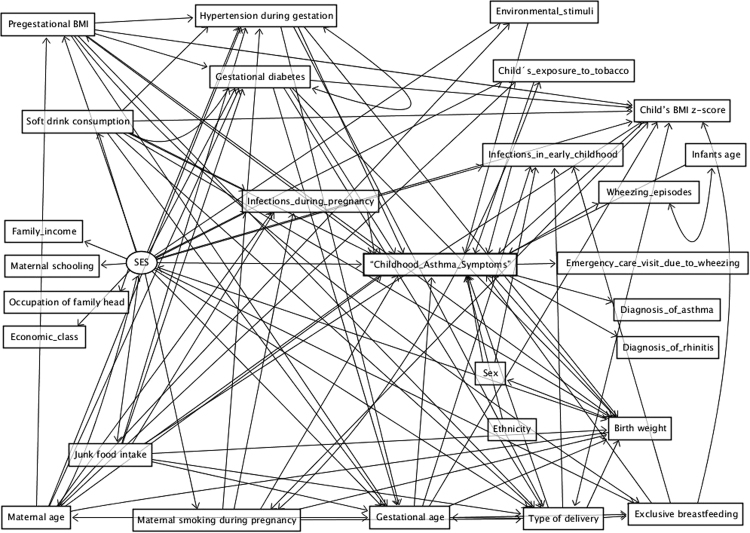Figure 2.
Proposed theoretical model for the environmental factors associated with “Childhood Asthma Symptoms” during the prenatal period and the first 1000 days of life: BRISA cohort, São Luís, Brazil, 2010–2013. The Socioeconomic Status (SES) would be a more distal determinant (exogenous variable) exerting its effects on the development of “Childhood Asthma Symptoms” in early childhood38 and on the remaining dependent variables of the model. Maternal age potentially affects pregestational body mass index (BMI)39 and “Childhood Asthma Symptoms”8. Maternal respiratory infections may be associated with “Childhood Asthma Symptoms”14. Smoking during pregnancy may result in “Childhood Asthma Symptoms”7 and may also result in low birth weight (LBW)40; soft drink and junk food consumption potentially affect blood pressure41,42 and diabetes43, which may lead to caesarean delivery, which has been associated with “Childhood Asthma Symptoms”9,10, LBW11 and preterm birth (PTB)12,13. Girls have a lower risk of “Childhood Asthma Symptoms” and black race is associated with an increased risk of “Childhood Asthma Symptoms”3,44. Exclusive breastfeeding may have a protective effect on “Childhood Asthma Symptoms”14. Child’s respiratory infections during the first year of life may be associated with “Childhood Asthma Symptoms”14, while higher child’s BMI z-score has been associated with “Childhood Asthma Symptoms”12,13. Environmental stimuli in early childhood (exposure to carpet covered floor, pets and mold/mildew), including exposure to tobacco have been associated with “Childhood Asthma Symptoms”7,14,23.

